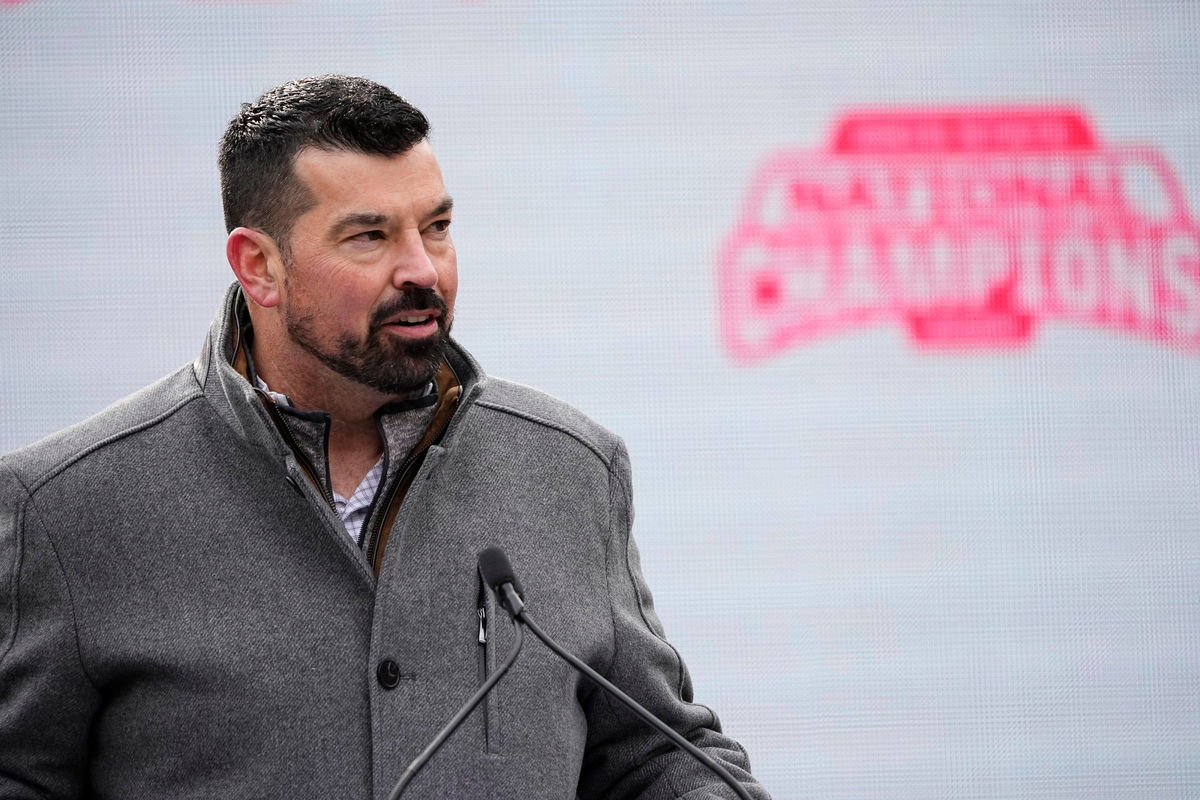
Imago
Syndication: The Columbus Dispatch Ohio State Buckeyes head coach Ryan Day speaks during the Ohio State Buckeyes College Football Playoff National Championship celebration at Ohio Stadium in Columbus on Jan. 26, 2025. Columbus , EDITORIAL USE ONLY PUBLICATIONxINxGERxSUIxAUTxONLY Copyright: xAdamxCairns/ColumbusxDispatchx USATSI_25274026

Imago
Syndication: The Columbus Dispatch Ohio State Buckeyes head coach Ryan Day speaks during the Ohio State Buckeyes College Football Playoff National Championship celebration at Ohio Stadium in Columbus on Jan. 26, 2025. Columbus , EDITORIAL USE ONLY PUBLICATIONxINxGERxSUIxAUTxONLY Copyright: xAdamxCairns/ColumbusxDispatchx USATSI_25274026
Ohio State’s NIL scene in 2025 is something of a tangled web. And Athletic Director Ross Bjork and Head Coach Ryan Day are just at the heart of it. While plenty of programs are throwing stacks of cash at recruits and causing bidding wars, Bjork’s formula is more measured. He’s calling the shots on a $35 million NIL budget but is very picky about how it’s spent. They are focusing on proven talent already in the program and spreading funds wisely across all 36 varsity sports at Ohio State. Bjork’s idea is to invest for the long haul, nurturing development rather than tossing out big initial checks that might blow the locker room chemistry or break the bank.
Watch What’s Trending Now!
There was also chatter about internal sabotage. Fans accused Bjork of holding back Ryan Day from spending NIL money how he wants. But Bjork and insiders like Kirk Barton put the kibosh on this, clarifying that they’re in full alignment on NIL spending strategy. That said, this restraint on Ohio State’s NIL spending is tight control over that $20.5 million House settlement budget. And a cautious $35 million overall strategy has had a real impact. The result? Columbus has been losing some top-tier talent, and the pressure is mounting within the Buckeye camp. That’s where Ross Bjork stepped up recently on a podcast with T-Bone and Tyvis, demanding answers from the NCAA.
ADVERTISEMENT

“Publish the rules,” Ross said. “Publish [the] college sports commission enforcement process. Those are the things that need to get off the ground, and that’s what we’re waiting on.” The new NIL rules level the playing field financially. It is making it harder for Ohio State to outspend everyone else. Bjork and Day are walking a tightrope. They are trying to avoid breaking the bank while not losing talent to programs with looser NIL spending.
ADVERTISEMENT
There are still unresolved enforcement mechanisms and pending NCAA regulations that the College Sports Commission must finalize. Ohio State is ready with entities like Buckeye Sports Group and the 1870 Foundation to implement NIL support properly within the settlement’s boundaries. The matter is, for the first time, Ohio State or any program itself can share up to about $20.5 million per year with athletes.
It’s starting with the 2025-26 season, and this amount will grow roughly 4% each year over the next decade. Of that $20.5 million cap, Ohio State has allocated $18 million specifically for NIL payouts. The plan aims at the four big revenue sports: football, men’s and women’s basketball, and women’s volleyball. The university earmarks the remaining $2.5 million for scholarships spread across all 36 varsity sports, indicating that OSU commits to maintaining support for the smaller programs as well.
ADVERTISEMENT
Bjork emphasized that these funds don’t just appear magically. They come with rules and responsibility. So, where is the NCAA rulebook? Every new scholarship awarded, for example, must be counted against the $20.5 million total. That means OSU’s sports departments have to balance NIL payments and scholarships and keep their recruits from getting poached, all within that sum.
And thus, the NCAA needs to provide them with ground to stand on. Ross states, “I’m not an attorney. Sometimes I have to play one, but there’s like a window on antirust like back payments.” The $20.5 million NIL amount and the scholarship funds won’t stay static. OSU plans for these numbers to grow steadily, eventually distributing funds across more sports while still adhering to Title IX requirements, ensuring gender equity. On the other side, Ryan Day’s football staff wants as much flexibility as possible to bring in high-profile recruits. Especially since NIL offers have become a major recruiting tool across college football. Bjork’s goal? Bring clarity and fairness to NIL for athletes. And make sure contracts and revenue sharing are transparent and don’t go off the rails.
ADVERTISEMENT
Why some five-star recruits are saying ‘No’ to Columbus
Ohio State football has hit a rough patch in recruiting recently, losing two coveted five-star targets, Jakob Weatherspoon and Deuce Geralds. And one prized four-star recruit, Danny Odem. And all within a month. Jakob Weatherspoon, a five-star defensive back and one of OSU’s prized targets, flipped to North Carolina, reportedly swayed by more aggressive NIL offers. Then Deuce Geralds, a talented four-star defensive lineman who has delayed his commitment amid fierce competition from other schools, signed with LSU.
Then there’s Danny Odem, the four-star standout who also found better NIL opportunities at Nebraska. The common thread? The Buckeyes’ restrained NIL budget. Also, defensive linemen like Luke Wafle and Carter Meadows reportedly took bigger NIL deals elsewhere. Now, this isn’t to say Ohio State is off the recruiting map. They still hold a top-10 class, and many recruits are attracted to their renowned coaching staff and history of preparing stars for the NFL.
But Bjork and Day are walking a fine line. Instead of throwing money at every recruit, they emphasize culture, development, and sustainable NIL earnings. That means they might look “cheap” compared to schools flushing cash via outside collectives. Critics say this might cost OSU in the near term, but Day insists their method prioritizes the long-term player development and culture over instant NIL dollars. And banking on OSU’s proven NFL track record and top-tier coaching to attract recruits who want more than just money.
ADVERTISEMENT
ADVERTISEMENT
ADVERTISEMENT
ADVERTISEMENT

